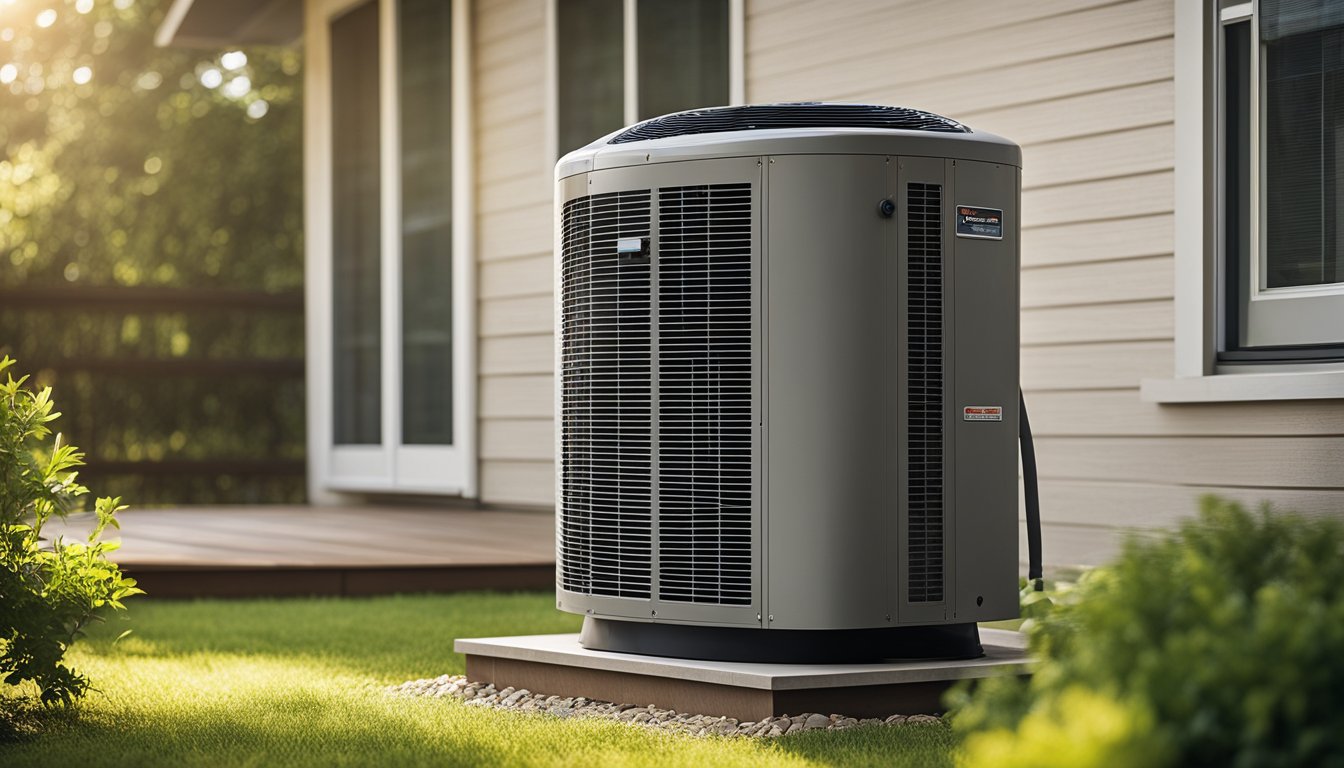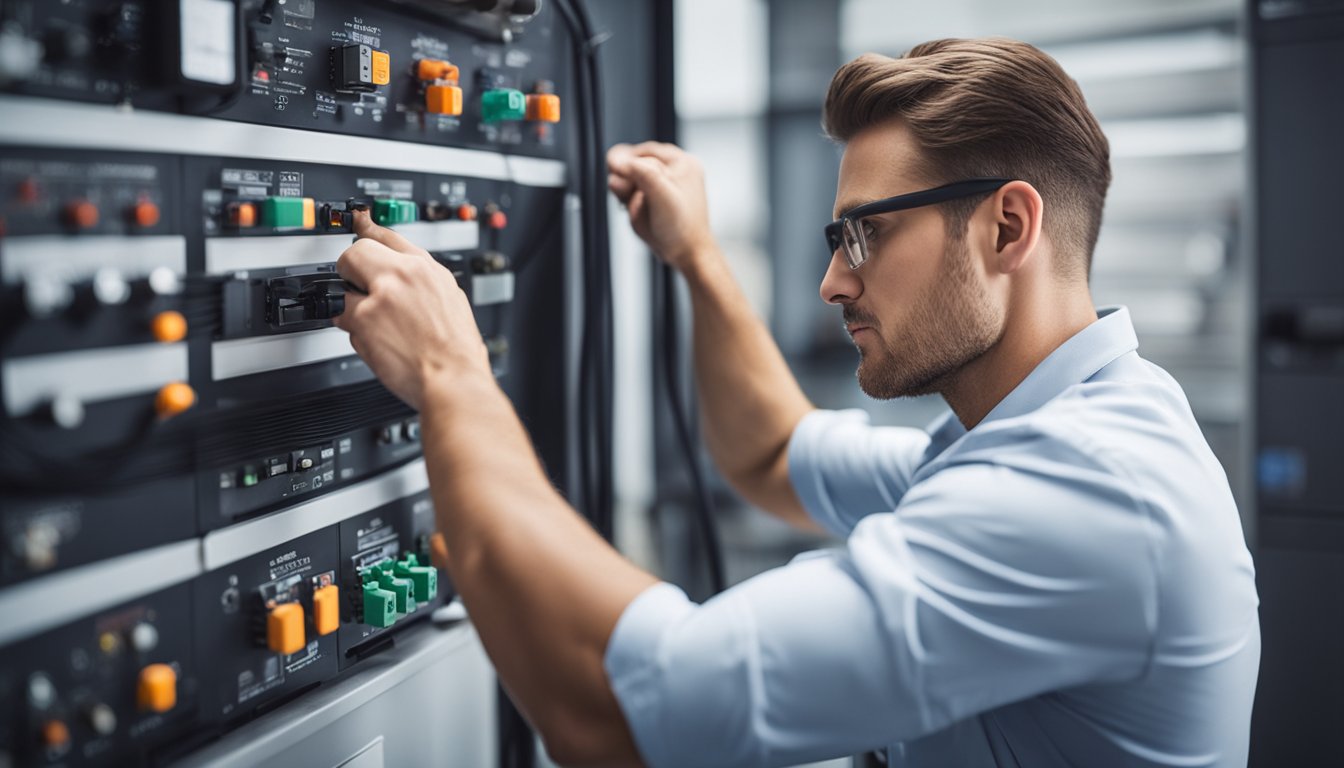Late updated: 18 Jan 2025 14:01
Written by: Eleanor Hartman
How To Optimise Your Heat Pump For Maximum Efficiency: A Comprehensive Guide
Optimising our heat pumps for maximum efficiency is a practical way to enhance home comfort and achieve significant energy savings. Our heat pumps play a crucial role in providing efficient, low-carbon heating. By making slight adjustments and understanding their mechanics, we can ensure they operate at their peak performance.

Proper settings and maintenance are key to unlocking our heat pump’s potential. This includes maintaining high flow rates, fine-tuning thermostat settings, and ensuring regular service checks. Such actions minimise energy consumption and improve efficiency, offering a pathway to reduce our environmental footprint.
When we optimise our heating systems, we not only lower energy bills but also increase the lifespan of our equipment. This investment in efficiency has long-term benefits, contributing to a more sustainable living environment.
Key Takeaways
- Heat pump efficiency relies on proper settings and regular maintenance.
- Adjusting flow rates and thermostat settings enhances performance and energy savings.
- Efficient heat pumps promote sustainability and reduce energy expenses.
Understanding Heat Pump Mechanics and Efficiency
Grasping the mechanics and efficiency of heat pumps is vital for optimising their performance. By focusing on the operation, impact factors, and advanced technologies of heat pumps, we can enhance energy efficiency and increase savings.
The Basics of Heat Pump Operation
Heat pumps transfer thermal energy instead of generating heat directly. They extract heat from outside air, ground, or water sources and move it indoors for heating. In cooling mode, the process is reversed.
The outdoor unit collects heat, which is transmitted via refrigerant to indoor coils. This cycle ensures effective climate control. Energy consumption varies with the heat transfer process, making them efficient compared to traditional systems. Utilising a programmable thermostat can further adjust temperatures for efficiency.
Key Factors Impacting Heat Pump Performance
Several elements affect the efficiency of a heat pump system. Insulation quality is crucial—poor insulation leads to energy loss, requiring more energy input for desired output. Proper installation and regular maintenance ensure optimal performance.
The refrigerant levels should be monitored annually to avoid inefficiencies. Ensuring proper airflow by keeping coils clean is vital. Implement weather compensation technology, which adjusts performance based on outdoor conditions. A smart thermostat helps manage heating schedules, aligning energy consumption with demand.
Advanced Heat Pump Technologies
Emerging technologies are revolutionising heat pump efficacies. Ground source heat pumps and geothermal heat pumps exploit the earth's stable temperatures for more consistent energy output. Integration with solar panels can harness renewable energy, reducing reliance on external sources.
Modern systems may include advanced outdoor coils that enhance heat exchange rates. With smart technology, weather and environmental factors are predictively managed. Such innovations are steering the future towards greener, more efficient heating systems.
Strategies for Maximising Heat Pump Efficiency

By implementing specific strategies for optimising thermostat settings, performing regular maintenance, enhancing home features, and considering supplementary systems, we can significantly improve heat pump efficiency. These measures lead to reduced energy costs and environmental benefits.
Optimising Thermostat Settings
Effectively managing thermostat settings is crucial. A recommended winter setting is 18–22°C, while in summer, it should be around 25–27°C. Using smart thermostats can make this task easier by automatically adjusting temperatures based on usage patterns.
Additionally, pairing your thermostat with a smartphone app offers intuitive control and remote access, ensuring a more comfortable living environment. Maintaining this balance helps minimise energy costs and increases the efficiency of the heat pump system.
Maintenance and Upkeep for Longevity
Regular maintenance is vital for prolonging the life of a heat pump. Annual professional servicing ensures all components are in working order. Regularly cleaning or replacing air filters is crucial, as it maintains consistent airflow and efficiency.
Moreover, monitoring the defrost cycle prevents excessive energy usage. Ensuring ductwork is sealed can minimise losses and enhance performance. Such actions reduce running costs and lower our carbon footprint.
Enhancing Home Features to Support Efficiency
Improving home features is another avenue for enhancing heat pump efficiency. Good insulation and sealing windows and doors with weather stripping help maintain a stable indoor temperature. Energy-efficient curtains further insulate the home, keeping the heat in during winter and out during summer.
Addressing potential duct leaks can improve airflow. These actions create an energy-efficient environment, directly impacting the heating curve and flow temperature.
Supplementary Systems and Cost-Effectiveness
Considering supplementary heating systems, such as wood stoves or electric heaters, can contribute to overall system efficiency, especially in extreme conditions. These systems should complement rather than overburden the heat pump.
Evaluating energy consumption with these additions ensures they remain cost-effective. Keeping an eye on the power bill helps us assess the economic impact and avoid unnecessary expenditure. These strategies contribute to a high-efficiency system that balances comfort and cost.
Frequently Asked Questions

Efficiency is the hallmark of optimising a heat pump. Our main focus is on settings, seasonal adjustments, operational costs, and achieving high efficiency. By understanding specifics, we can ensure that our heat pumps function optimally, saving energy and costs throughout the year.
What are the recommended settings for a heat pump during summer for optimal efficiency?
During the summer, we should set our heat pumps to approximately 24-26°C. This range balances comfort and energy savings. Utilising a programmable thermostat can help maintain consistent temperatures, which prevents excessive energy consumption.
How can one enhance the efficiency of a heat pump in the winter season?
To maximise efficiency in winter, we should keep our heat pumps set between 18-22°C. We must also ensure that we carry out regular maintenance, such as cleaning or replacing filters and sealing any leaks within the ductwork. Insulating our homes effectively minimises heat loss as well.
At which temperature range does a heat pump operate at peak efficiency?
Heat pumps generally operate most efficiently within moderate temperature ranges of 15-30°C. We need to pay attention to their efficiency lower or higher than this range. Recognising when external temperatures push the unit out of its optimal range can prevent unnecessary strain.
What practices should be followed to ensure a heat pump maintains high efficiency throughout the year?
Year-round efficiency requires consistent practices. We should schedule regular maintenance checks, clean or replace filters, and ensure that there is no debris obstructing the unit. Utilising energy-efficient settings on thermostats and monitoring usage can also prevent unnecessary energy loss.
Is constant operation of a heat pump more cost-effective than intermittent use?
Continuous operation isn’t always more cost-effective. Instead, strategic use is crucial. We should avoid constant running by using programmable thermostats to adjust the temperature settings according to our daily schedules. This approach can prevent wasteful energy consumption.
What factors determine the percentage efficiency of a heat pump and how is it possible to achieve over 300% efficiency?
The efficiency of a heat pump, measured as Coefficient of Performance (COP), reflects the ratio of heat provided to electricity consumed. Achieving over 300% efficiency is possible because pumps transfer more energy than they consume. Factors influencing this include the heat source temperature and design technologies employed.